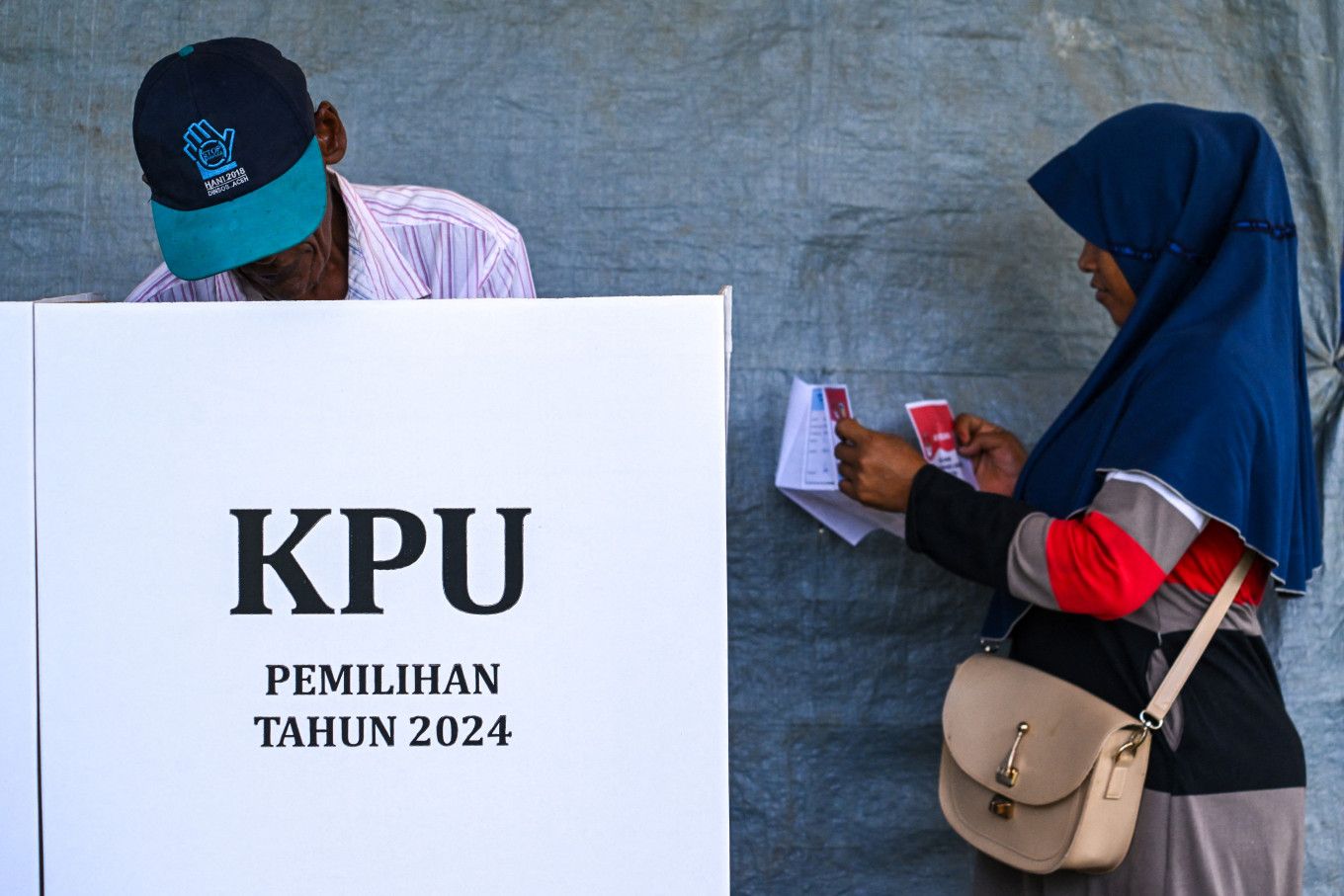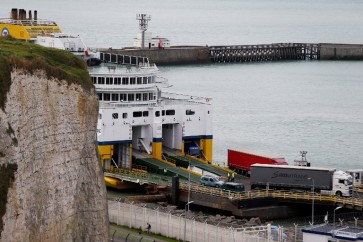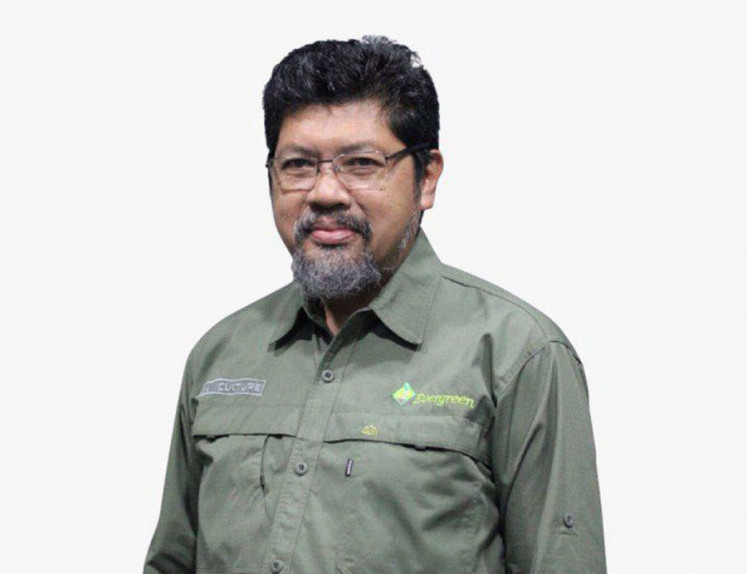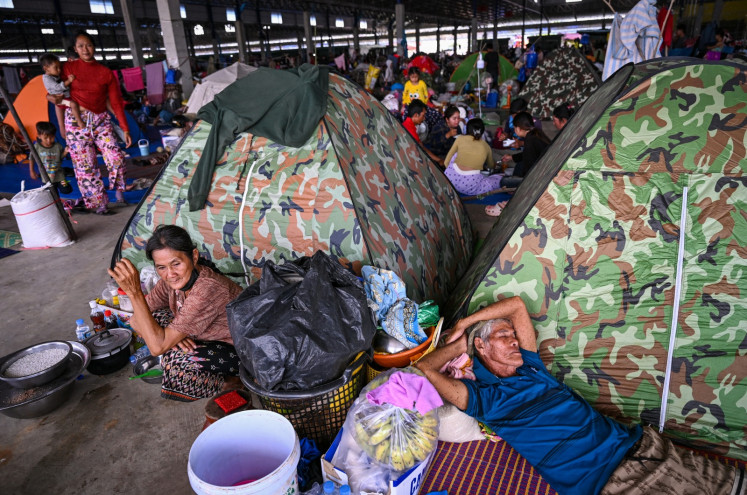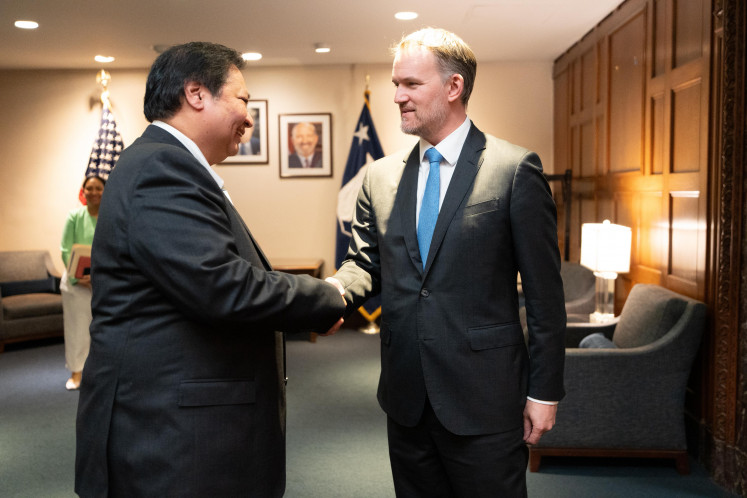Popular Reads
Top Results
Can't find what you're looking for?
View all search resultsPopular Reads
Top Results
Can't find what you're looking for?
View all search resultsAcehnese women sidelined from decision-making, despite past tragedy and conflict
Aceh still has a long road ahead in embracing women as contributing members of society at all levels, including in disaster management and preparedness, toward inclusive, equitable development.
Change text size
Gift Premium Articles
to Anyone
T
he devastating 2004 Indian Ocean earthquake and tsunami remains etched in the memories of many, especially in Aceh, where the disaster claimed hundreds of thousands of lives. Among the casualties, women were disproportionately affected in a ratio of four to one.
Twenty years later, the struggle to guarantee women’s rights continues to face significant hurdles. Despite historical records of women leaders shaping the region and the disaster’s impacts borne by women, their involvement in the development of modern Aceh remains minimal.
Aceh has a remarkable history of female leadership, with figures such as Cut Nyak Dhien, Cut Nyak Meutia, Laksamana Keumalahayati, Pocut Baren and Tengku Fakinah playing pivotal roles in defending the region against Dutch colonial forces.
Even further back in history, Aceh witnessed the reign of formidable female rulers, such as Sultanah Tajul Alam Safiatuddin (1641-1675) and Nurul Alam Naqiatuddin (1675-1678), who led the Kingdom of Aceh Darussalam, an influential Islamic power in Southeast Asia.
Fast-forward to modern history: The prolonged armed conflict between the Free Aceh Movement (GAM) and the Indonesian government in 1976-2005 also highlighted the crucial role of women. When many men fled for safety, grassroots women stood firm, shouldering dual domestic and public responsibilities. They negotiated with military forces to ensure their villages’ safety, advocated for the release of detained family members and secured food for their communities despite immense challenges.
This narrative, documented in personal accounts, research and reports, reveals the depth of Acehnese women’s contributions to their communities amid adversity.
Unfortunately, the resilience of Acehnese women remains unacknowledged, post-tsunami and post-conflict. Initiatives to involve women in development are concentrated in the capital Banda Aceh, while their representation in politics is liminal.
In Banda Aceh, the government has taken significant steps to promote women’s participation in development planning. One notable initiative is the establishment of Musrena, a special women’s forum designed to gather and integrate women’s proposals into local development plans. Funded by regional budgets and village allocations, these forums provide a platform for women to articulate their needs and experiences.
The outcomes from Musrena dialogues are compiled in stages, from the village (gampong) to the municipal level, ensuring they become part of the major decisions agreed at each level’s planning forum.
The Musrena initiative owes much to the leadership of Illiza Sa'aduddin Djamal, who served as Banda Aceh deputy mayor between 2007 and 2014. Under her guidance, the forum was institutionalized through regulations, ensuring its sustainability.
However, this innovative model has yet to be widely adopted by other regions. To maximize its output, Musrena needs capacity building activities that are accessible to women from diverse backgrounds and serve as a strategy to increase the number of women leaders.
The representation of women in Aceh’s political and governance structures remains limited. Between 2014 and 2019, only 12 women served in Aceh’s 81-member legislative council, but the figure dropped to just eight in the 2024 election, far below the minimum representation threshold of 30 percent. This underscores the persistent challenges faced by women in gaining political footholds.
The lack of female representation is also evident in the Aceh administration. Women occupy just five out of 62 senior roles and 49 out of 283 mid-level roles, highlighting the stark disparity between men and women in the province’s leadership.
Independent commissions in Aceh, which ideally should foster inclusive leadership, have also failed to create a supportive environment for women leaders. The absence of women in key strategic positions reflects a broader trend across Aceh that extends down to the gampong level. Women’s participation remains minimal in village governance despite a 2008 qanun (Islamic bylaw) that mandates equality in community leadership and cultural preservation.
Reconstruction after the tsunami demanded a transformative approach to disaster management. A 2007 law promoting a shift from emergency-focused responses to a more integrated strategy of mitigation, response and post-disaster recovery has been slow to materialize.
Emergency responses continue to overshadow other phases, and preparedness efforts remain limited and poorly integrated across sectors. Recovery programs often fail to adhere to the “build back better and safer” disaster risk reduction principle.
Gender-responsive disaster management is essential to prepare all segments of society, including women and vulnerable groups, for future crises. The limited role of women in Aceh’s post-tsunami recovery and development processes, especially in contrast with how deeply they were affected by the tragedy, highlights the need for more inclusive approaches.
This requires systemic planning, policy formulation, budget allocation and implementation. Monitoring and evaluation must emphasize measurable outcomes, guided by frameworks like National Disaster Mitigation Agency (BNPB) Regulation No. 13/2014 on gender mainstreaming in disaster management. Indicators of success should include women’s access to resources, active participation, control over decisions and equitable benefits.
Women’s experiences and contributions should form the foundation of disaster mitigation strategies. Thus, it is crucial to empower women financially, ensure their access to education, improve mental and reproductive health and enhance their political and managerial skills.
Aceh’s history and the lessons from the tsunami and conflict should serve as reminders of the importance of inclusive development.
Two decades on, the region must fully embrace gender equality as a cornerstone of its progress. Women’s meaningful participation and leadership are not just a nod to history, but a necessary path to a more resilient and equitable future.
---
The writer is a researcher at the Tsunami and Disaster Mitigation Research Center (TDMRC) and the Social and Cultural Research Center at Syiah Kuala University. This article is republished under a Creative Commons license.

